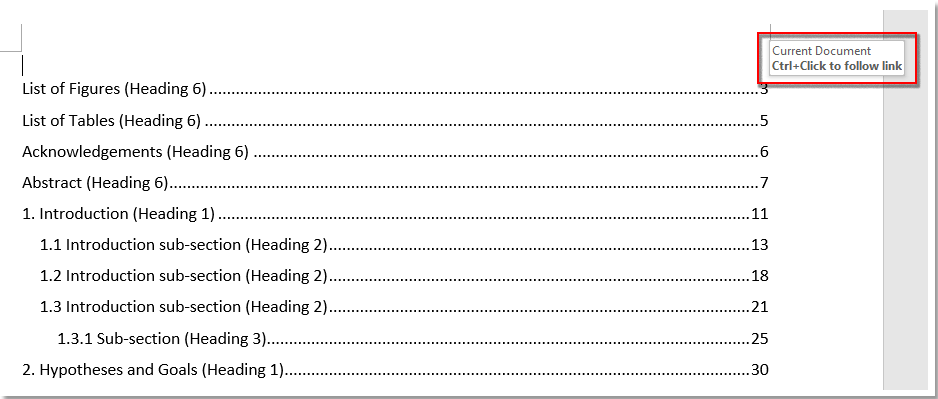

- CREATE TABLE OF CONTENTS IN WORD 2016 HOW TO
- CREATE TABLE OF CONTENTS IN WORD 2016 UPDATE
- CREATE TABLE OF CONTENTS IN WORD 2016 PRO
Select Remove Table of Contents from the drop-down menu.įigure 16.You don’t have to select the table of contents to delete it.
CREATE TABLE OF CONTENTS IN WORD 2016 UPDATE
Your table of contents should update immediately. Select Update entire table from the Update Table of Contents dialog box.įigure 15.
CREATE TABLE OF CONTENTS IN WORD 2016 PRO
Pro Tip: You can also select Update Table in the Table of Contents group in the References tab.


CREATE TABLE OF CONTENTS IN WORD 2016 HOW TO
How to Choose Individual Heading Levels for a Table of Contentsīy default, Word’s tables of contents include text formatted with sequential heading styles (e.g., Heading 1, Heading 2, Heading 3, etc.). (Optional Step) Select additional options concerning page numbers and tab leaders, which are the dots, dashes, or lines that appear before the page number.įigure 8.Select the number of levels you want to include in the Show levels menu.(The From Template option is based on the styles established in your current template.) Select a visual style from the Formats menu in the Table of Contents dialog box.Select Custom Table of Contents from the drop-down menu.įigure 5.Select the Table of Contents button (see figure 2).Select the References tab in the ribbon (see figure 1).Pro Tip: The custom table of contents option does not automatically create a title (e.g., Table of Contents or Contents), so be sure to leave a blank line above your cursor where you can enter a title later. Word’s custom tables of contents provide formatting options and allow you to include or exclude specific heading levels. Built-in table of contents How to Create a Custom Table of Contents Select a built-in table of contents from the drop-down menu.Tables of contents are available for Word documents (with a. That is, to all the headings and subheadings in your Word document. Select the References tab in the ribbon. An automatic table of contents adds direct links from the rows of the table of contents to the different sections of the document.Place your cursor where you want to insert the table of contents.However, they offer the fewest number of customization options. Word’s built-in tables of contents are the easiest to create. How to Create a Built-In Table of Contents


 0 kommentar(er)
0 kommentar(er)
